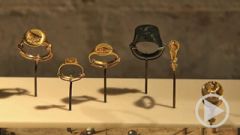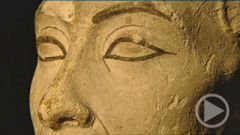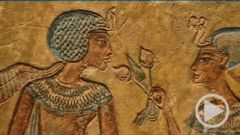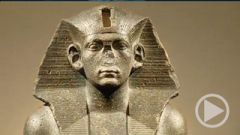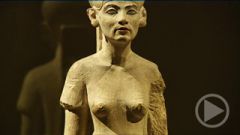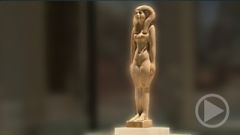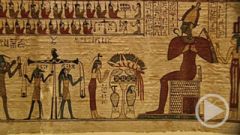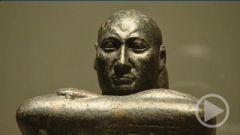- Home
- »
- Germany
- »
- Berlin
- »
- Museum Island
- »
- The Berlin Egyptian Museum
- »
- The Berlin Egyptian Museum - The Scribe Statue of Der-Senedj
The Scribe Statue of Der-Senedj
Scribe Statue of Der-senedj
Together with the seated figure and the standing-walking figure, this scribe figure is the third basic form of human representation in ancient Egyptian sculpture. Its purpose is to document the professional and social status of the person portrayed. As a scribe he is a member of an elite, who have mastered the difficult writing system of ancient Egyptian and are thus qualified for a career in the service of the state. In the textbooks of the elite schools the profession of scribe is set above all other activities:
„It is the finest of all professions, there is nothing to compare with it on earth. A scribe working in any position for the state will never be in need. And bear in mind: there is no profession without a superior except that of the scribe – he is the superior! If you can write, that will be better for you than all other professions. The birth goddess who laid this profession on the scribe will bring him to the head of the council.“
That's what it says in the teachings of Kheti, a kind of promotional brochure for the profession of scribe, which was learned by heart and copied in schools over many centuries. The scribe figure of Der-senedj is one of the oldest sculptures of this type, which was first placed in the tombs of members of the royal household at the time of the pyramids of Giza, around 2600 B.C. In his left hand, Der-senedj holds a scroll of papyrus, the unrolled end of which rests on his kilt. In his right hand he seems to be holding a bulrush, with which he is writing on the papyrus. His head is raised, apparently to listen to the dictation which it is his office and privilege to take down.


